Run19 Cosmics and SuperSector Alignment
If you check blog post about residuals in Run18 and Run19 FXT, you will see the issue that lead towards reexamining the alignment in Run19.
Pass600 is the result of previous alignment;
Pass605 is the last result after my passes converged well enough.
At this point you can go back and check the results of the residual after the new alignment - very good result. [could it be better though? keep reading]
Pass600
Pass605
Plots above show the profile of the z shift before and after the new alignment. Even though there is improvement of about 2.5mm they do look funny. So look deeper.
Detailed look at the z shift showed the double peak in the distribution across the chosen data which ranges from day 48 (this is day after putting back the GG drivers, therefore after the noise issue) to the last day of Run019.
The double peak could be separated before and after day 53 [February 23] - this is when we started taking 19.6 GeV AuAu data.
.png)
This changes was traced to new parameter set on tpcSectorT0offset.20190223.*.C. Reverting those parameters for day 53 gives following results:
Why was this shift added? Should we counter this shift in other place ?
Here is the answer to the above question and the fool story understood:
Run-19 was a first run with all iTPC sectors. Therefore it was important to align the electronics timing for the first time (even though we had a single sector 20 of iTPC in Run-18, Run-19 was still the first look at the whole system). Run-19 started with cosmics and then some pre-collision tuning etc. The AuAu 19.6 GeV first collisions of Run-19 came on day 56, some initial tuning a day or two before. The timing is aligned using the prompt hits. The detector alignment using the cosmics was done by Yuri with cosmic data taken before collisions. The prompt hit based results came after Day 53-54. There was about 2.5 mm worth of timebucket shift. These parameters resulted in different shift seen as Z shift in the above plots for the different cosmic data. After discussing with Yuri we decided that, I will take one more look at the prompt hits, establish the final set of parameters (if any different from what is already in posr 20190223 set) and then apply these to entire Run19 and redo alignment to account for the shift (2.5 mm or so). Those results are below.
So first thing I did was, check the prompts again and see if we need to do one final tune. Below are the plots for inner and outer sectors for the prompt hits (those deviations are set as T0 for each sector separately inner and outer).
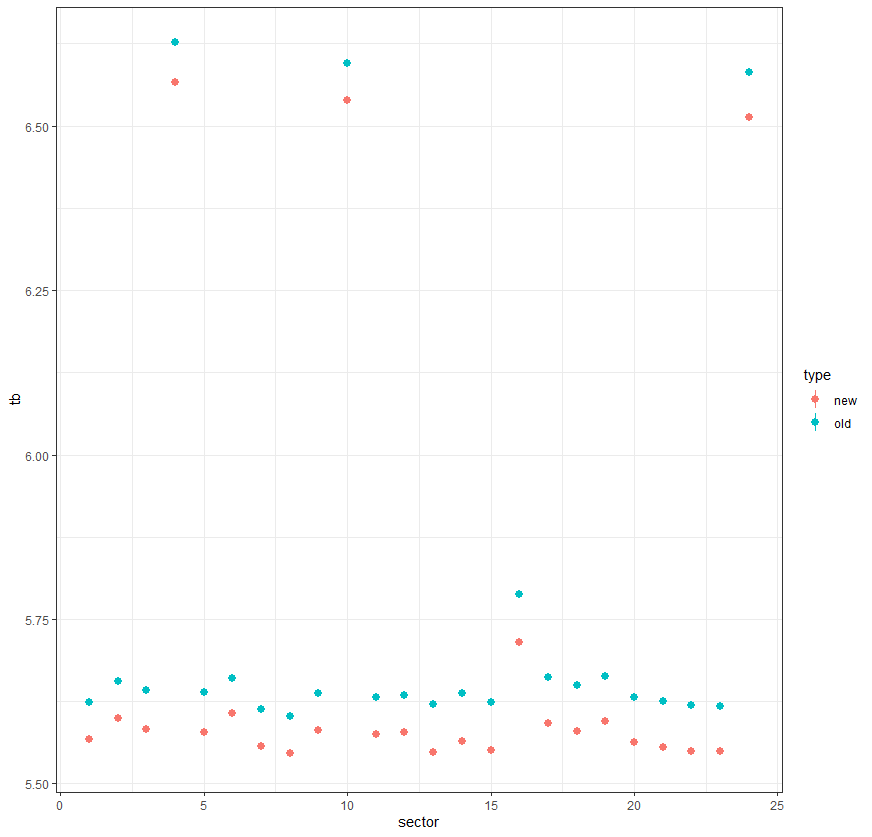
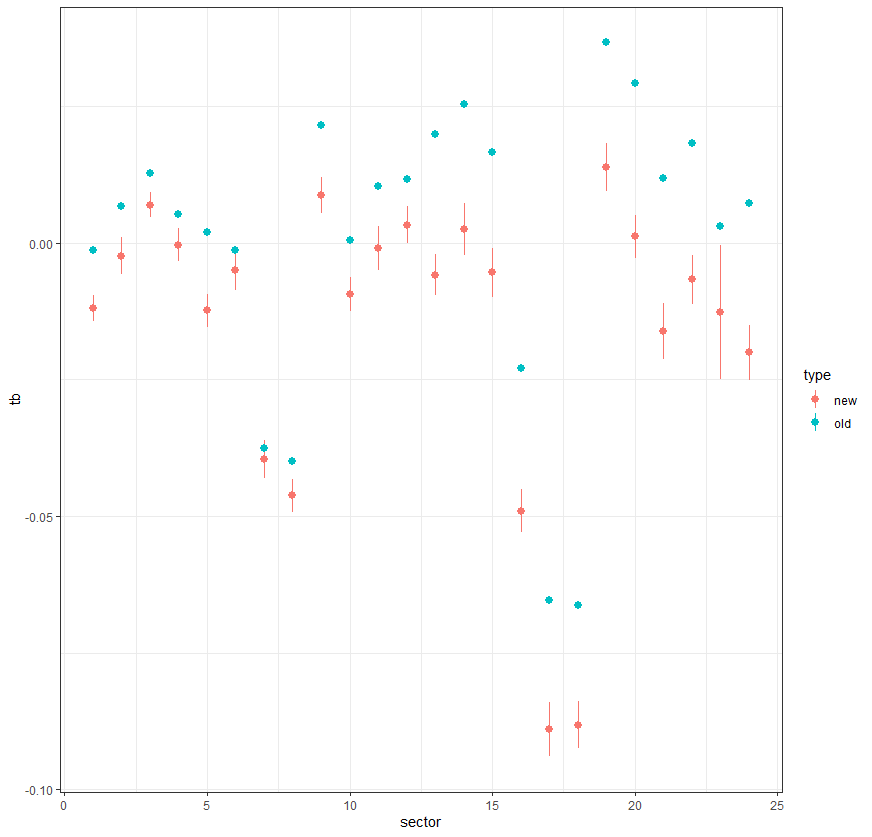
Below are the plots of my alignment passes (entire history) for correction parameters x,y,z, a(alpha), b (beta), g(gamma). You will notice that is started way off (especially in Z), that is the big shift that needed to be corrected, it was corrected at pass 6. At that point I payed attention at the double peak in Z and started investigating different options with and without it, hence the jumping in parameters. At pass number 10 the entire dataset has single tpcSectorT0 parameters. At pass 11 I switched the tpcSectorT0 parameter to single value for entire Run19 to those that I obtained (shown on above plots as red points).
.png)
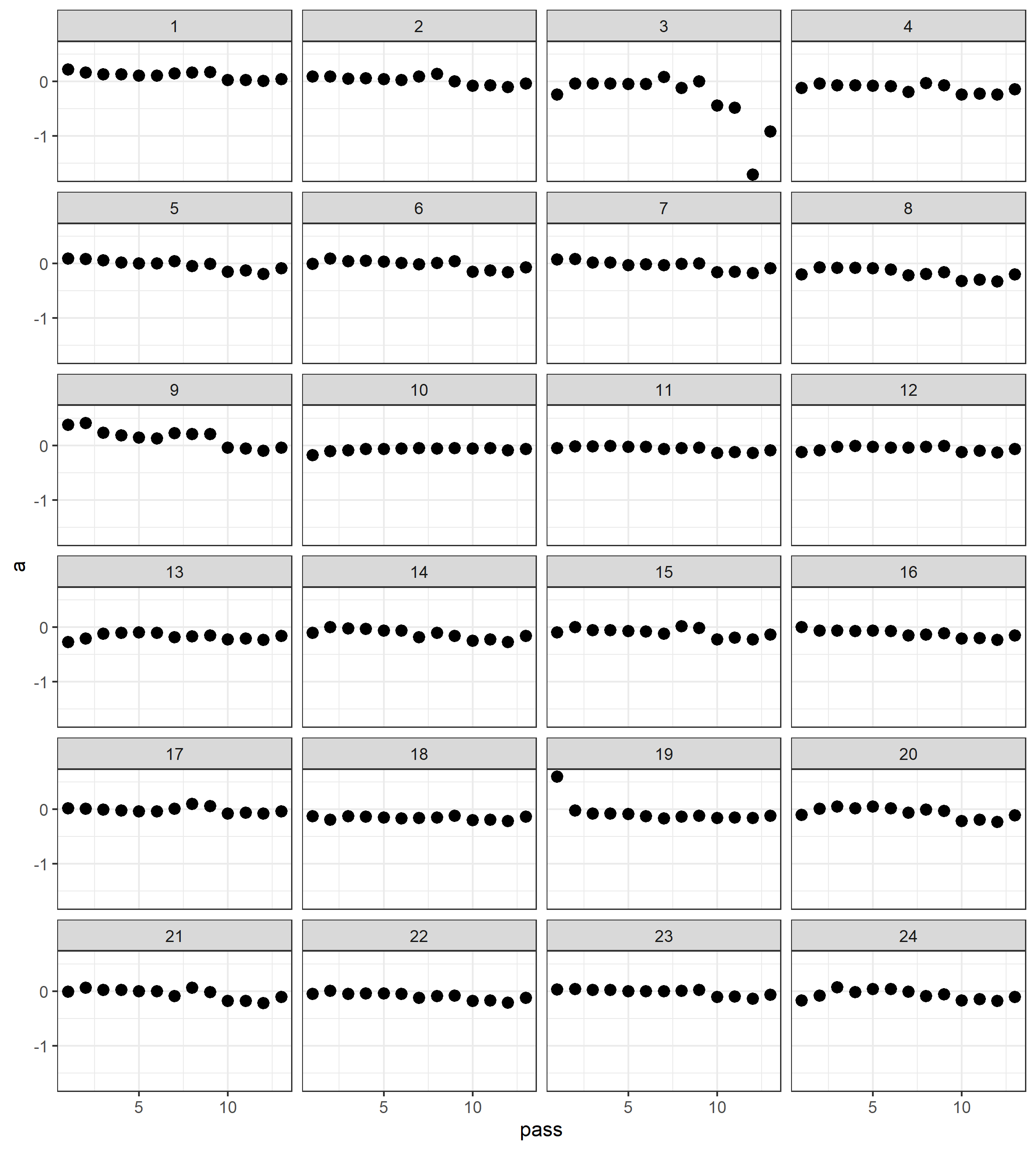


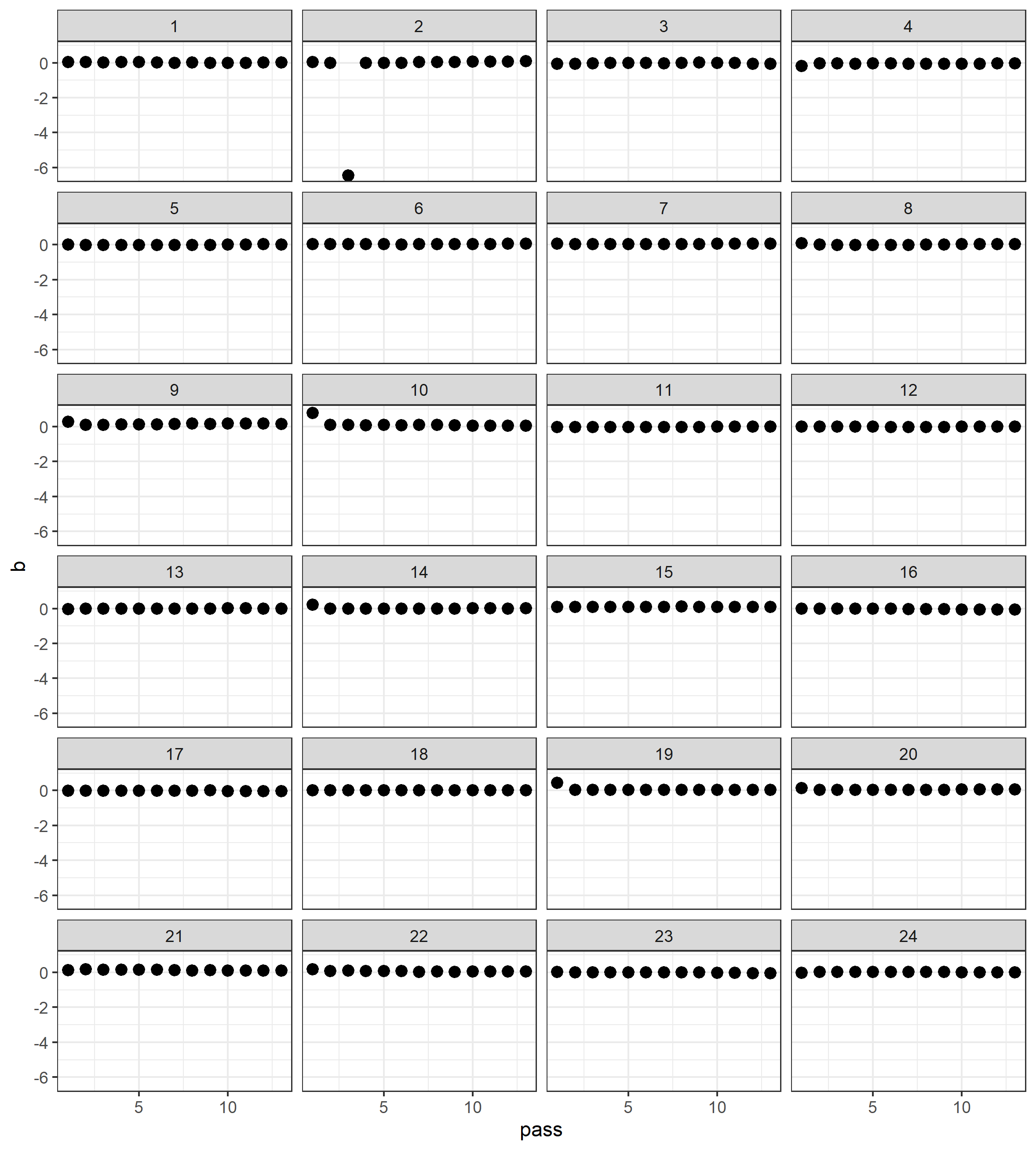
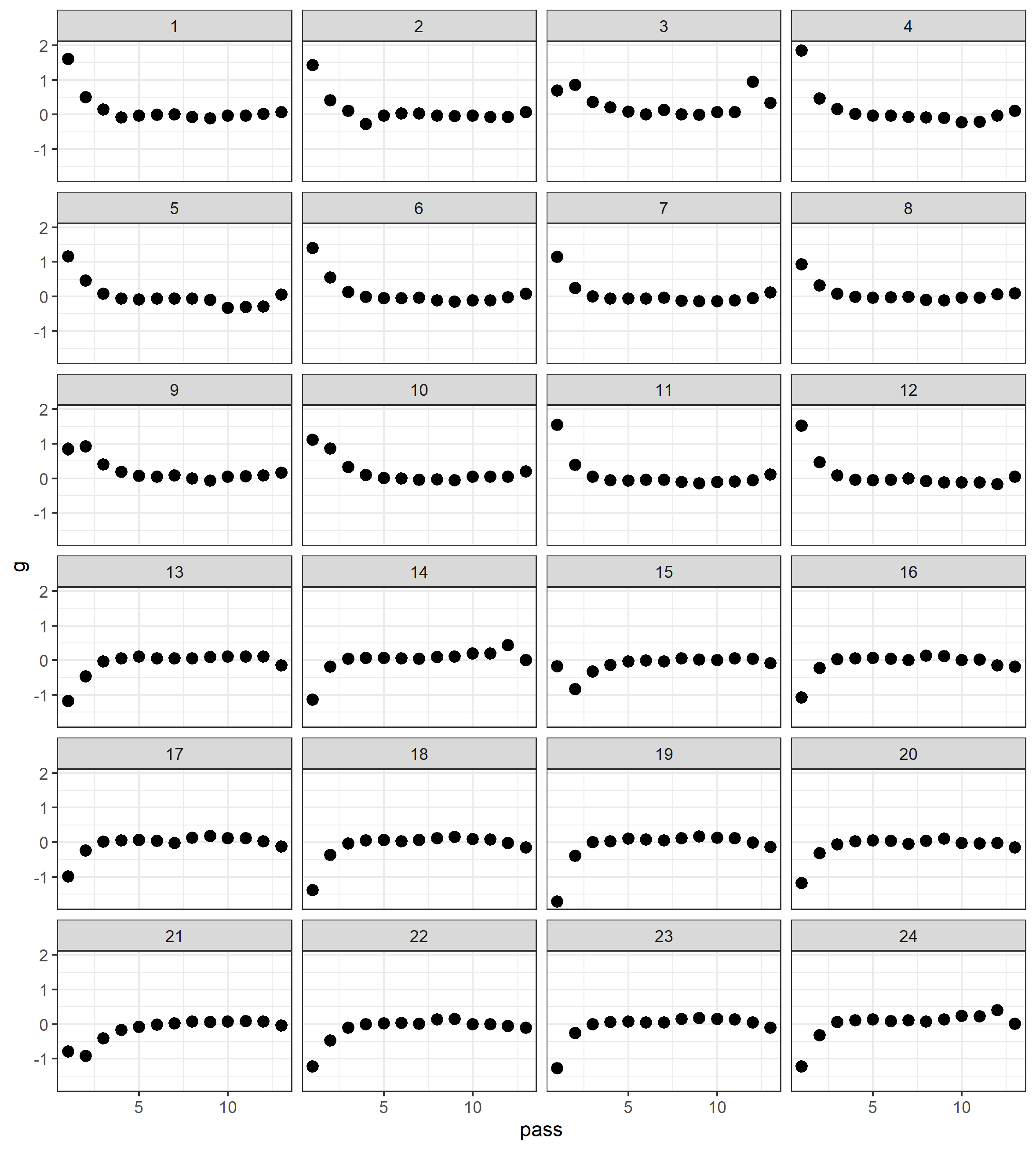
Here is a single view summary of the alignment efforts:
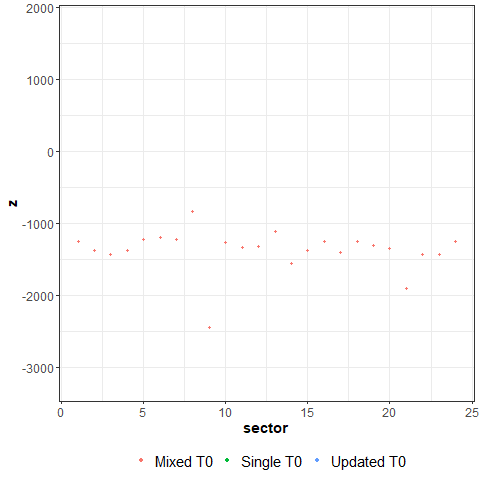
SuperSector Aligmnet
After alignment of inner sectors with outer sectors we need to look that entire TPC is well aligned sector by sector. Looking at TpcSuperSector alignment with new prompthit T0 and alignment from cosmics we see following:
.png)
Black points are the alignment parameters after putting in the correction from the initial parameters (red). These should be brought to zero.
After few iterations everything was brought to the acceptable level. See the animation of the process below. Notice Sector 3 at the end. That is because I was in parallel tuning the inner vs outer sector 3 parameters by almost doubling the used cosmics data. And I plugged it in when ready. That affected the supersector naturally and was corrected along with final tuning of all together.
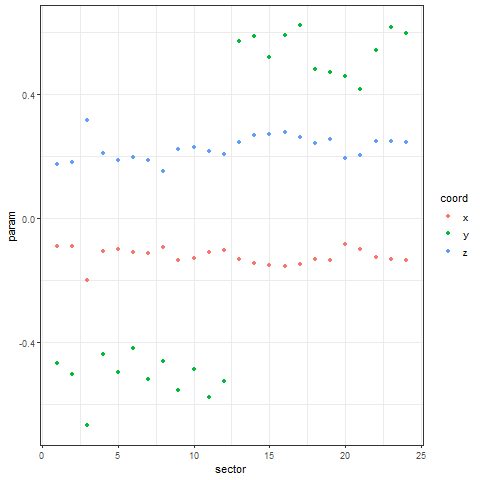
Update on June 3rd:
Gene and Babu noticed that there is still some remnant in the data, that looks like negative correction of the Space Charge, which is unphysical and might be to some remaining misalignment.
I checked the supersector alignment in a very low luminosity 19.6 GeV collision data (low zdc/bbc rate) and also compared the results when implementing SC correction and not implementing, results are below:
There is indication of a supersector misalignment and also some indication that in local Y dirrection having SC correction in even in this low luminosity run has noticable effect.
Next I checked what would removing the SC correction from the run I worked on before (obtained results in above supersector calibration work) had any effect. Results is below:
This indicates that the remaining supersector misalignment is most probably due to me having the SC correction in while doing the alignment last time. The difference seen in the plot above between with (BLACK) and without (RED) SC Correction in chain is about same as seen in the remaining misalignment int the low lumi plot (above the above one). Also the supersector positions have much less scatter without SC correction - perhaps something to think about (the scatter is seen in the low lumi plot though, because I introduced it while making corrections to the alignment with the SC correction in)
UPDATE: August 5, 2020
I wanted to make sure that there is no variation in prompt hit timing during the run. I took the data produced by Gene (event.root files) and grouped them by 50 in each and looked at the spread. Looks like everything is in order here.

I also looked at the slope of the timebucket vs. padrow distribution for every sector in every range (50 files at once) and they are also very consistent.
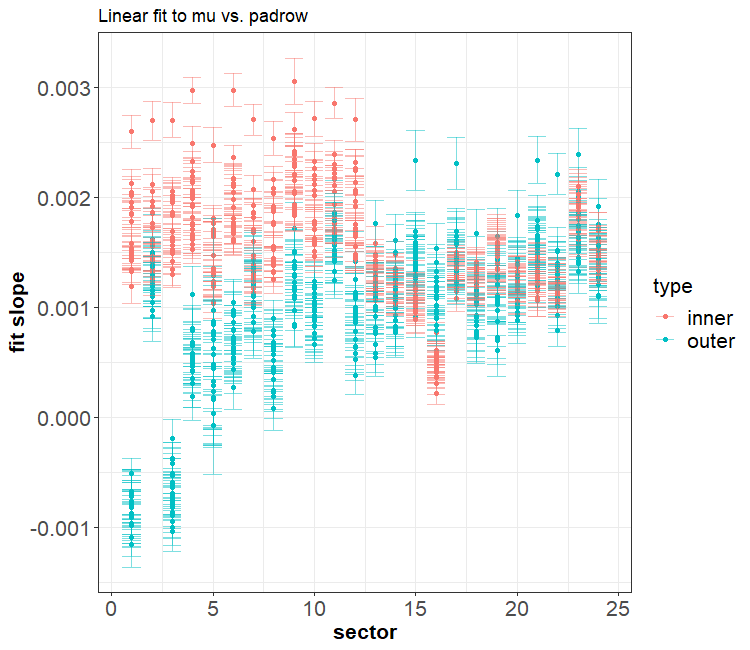
I did similar study, similar splitting of data as for the above plots, for the supersector alignment parameters. Results are below:
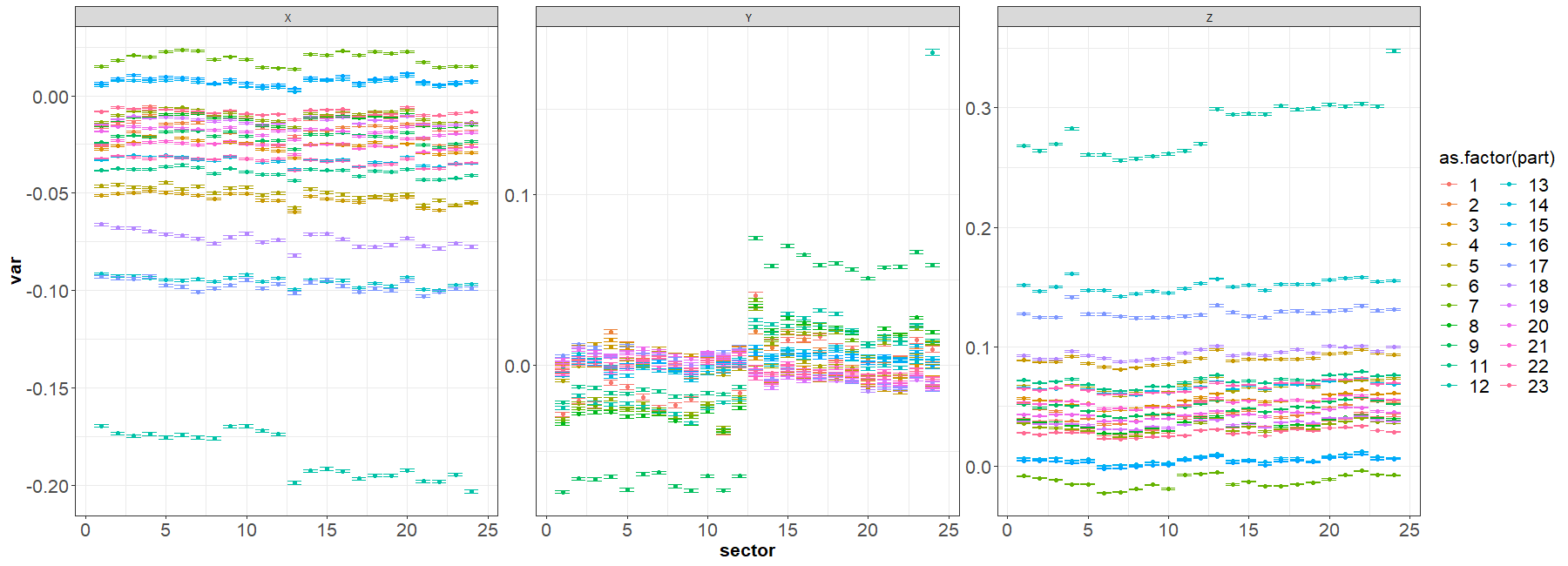
After this I removed the injection runs and plotted these parameters as function of time. In the below plot about 850 non-injection runs are bunched 10 runs for each point:
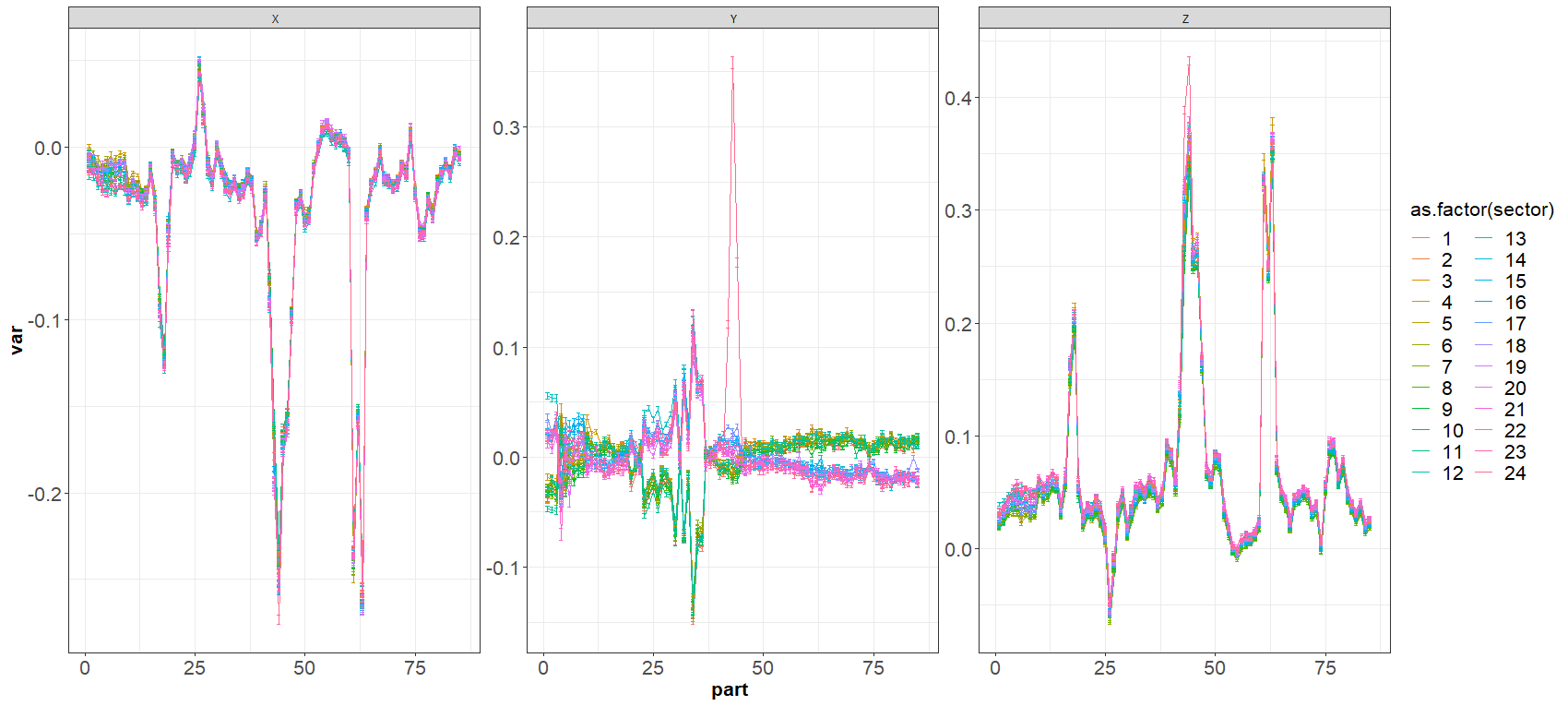
I also used the limited number of files available from the TFG20c express production of this data and added it on top with the same granularity:
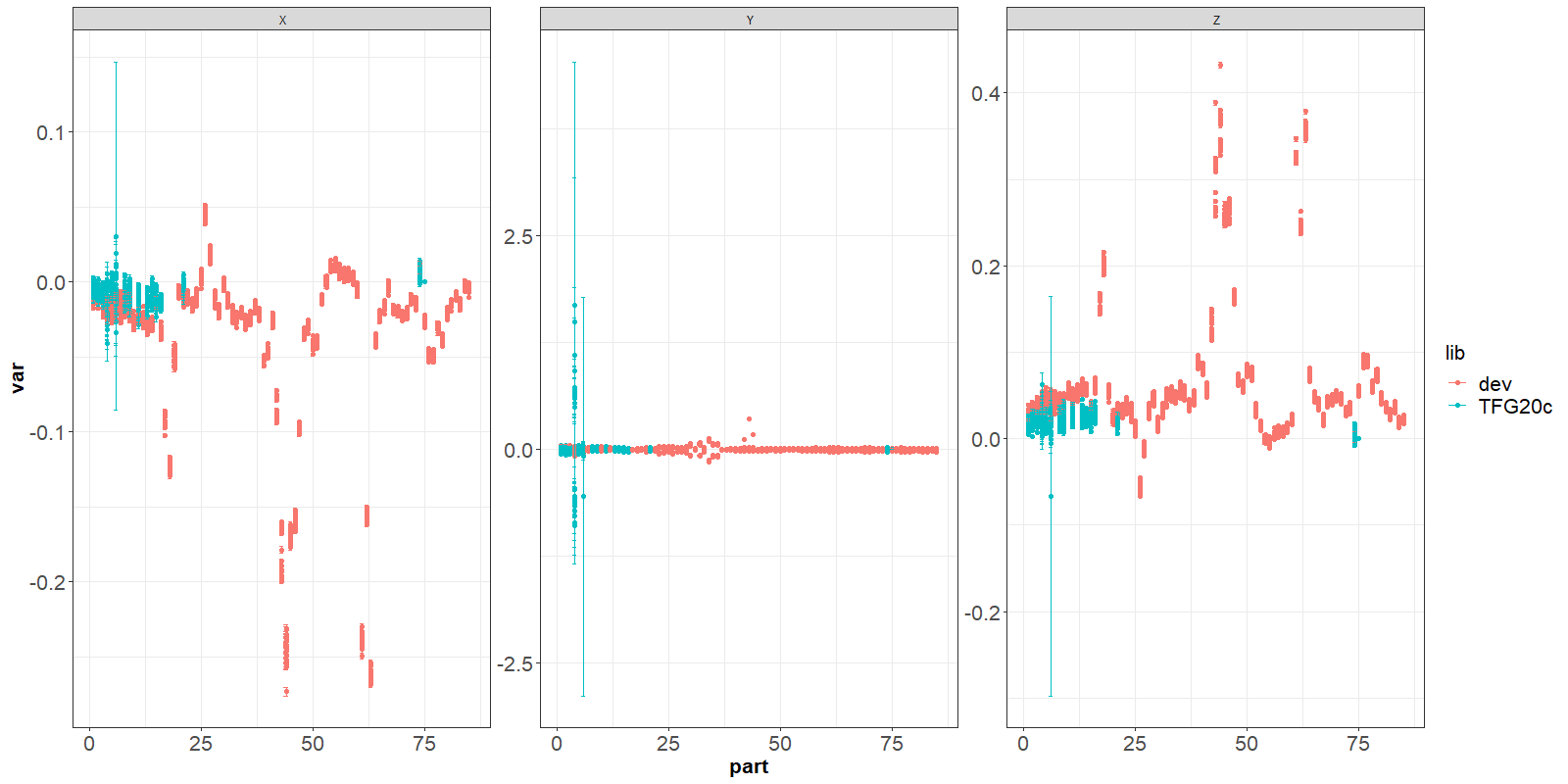
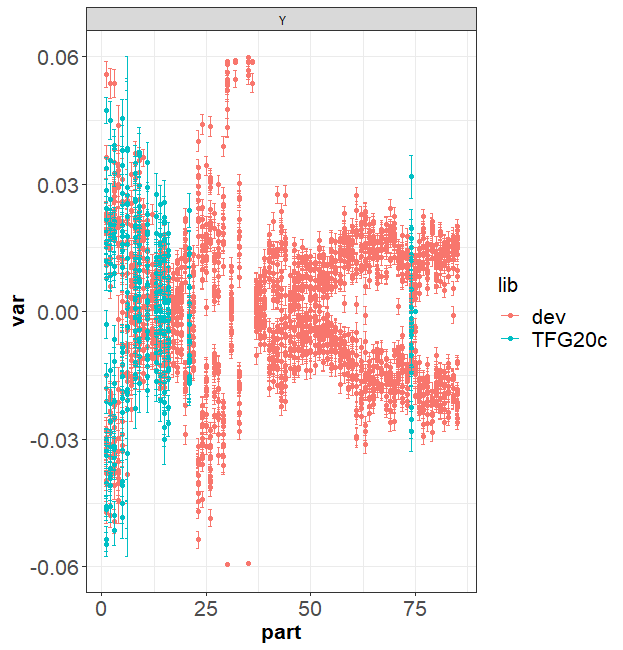
The agreement between dev and TFG20c is pretty good. So I conclude that there is no difference there.
Below is the same plot with the 100 micron limits, question is, what do we blame for the change of the alignment as a function of time?
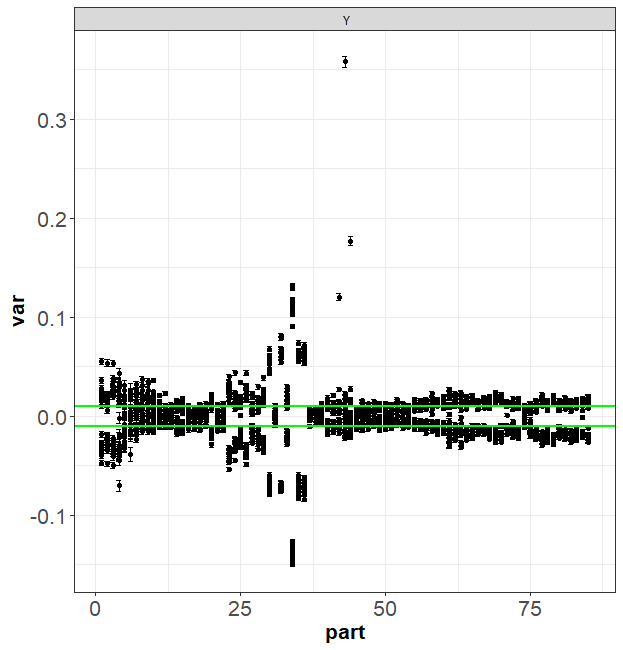
Drift velocities were also updated to remove the sector 16 which produces outliers in the measurements sometimes. After this Space Charge calibration was also done (although the claim is that the change was insignificant). Gene reproduces a limited sample after these two recalibrations and below are the results (binning in here is not same as in the above plots, because the statistics was different and smaller number of runs):
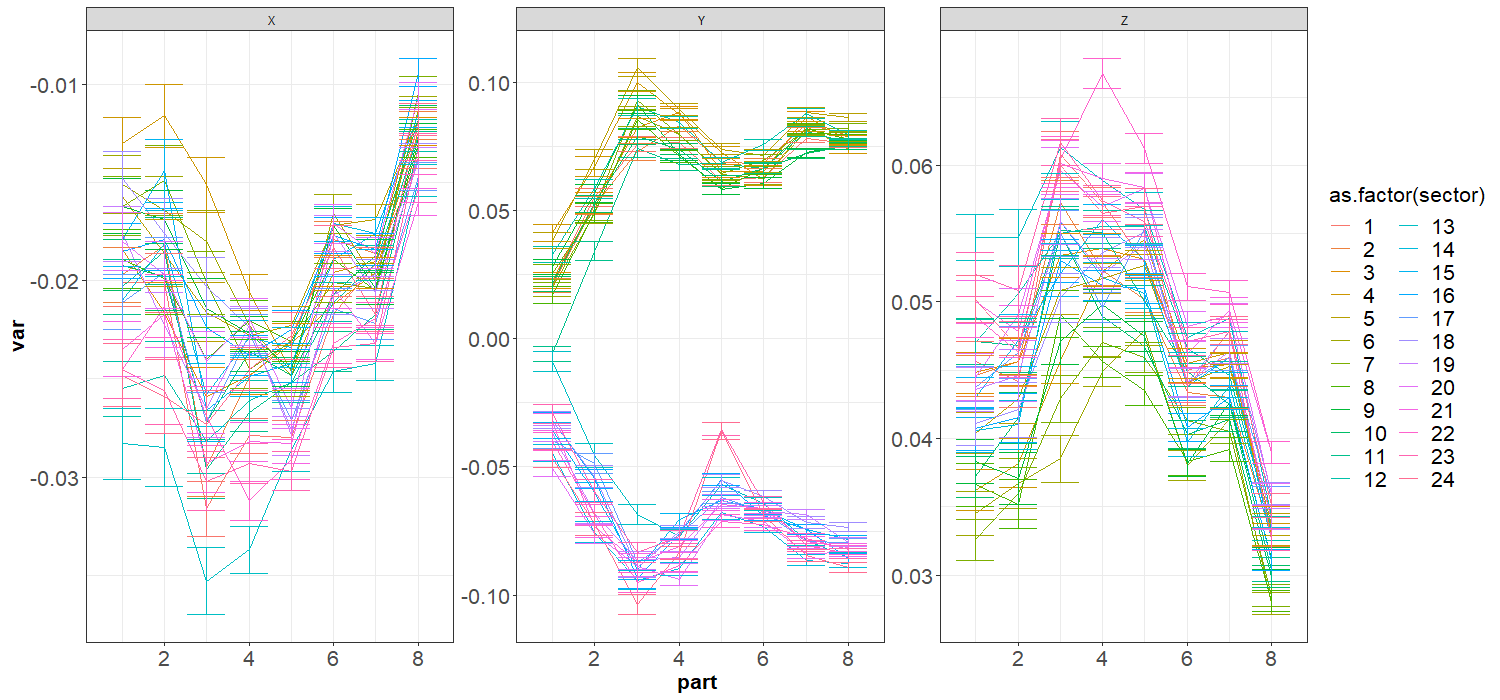
This shows that the kinks in local X and Z directions are gone, but I see a large offset (somewhat constant) in the Y direction. This needs to be adjusted.
Update: September 30, 2020
During last few weeks the search for the culprit for the mass squared problem between positive and negative particle continued and revealed some of the shortcomings of the SuperSector alignment procedure.
1) First thing I noticed was that vpdZ in StMuEvent was not filled in properly (at least starting from Run-19) which was used for the selection of events (10cm between tpc and vpd vertices) alignment. vpdZ was always zero, so effectively only events within 10cm from the center were selected, which for some reason produced difference in alignment results. Plot below shows difference between cases when the selection is completely off (all tpc vertices) vs. 10 cm wrongly selected case:
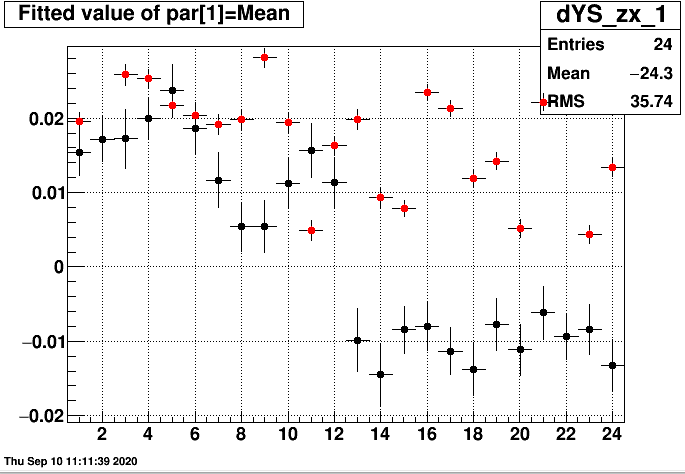
The above plot paired with the observation that removal of proper selection (10 cm between tpc and vpd) shows almost no difference means that this is important to have properly or removed. Gene confirmed that even though for some reason StMuEvent is not properly filled the correct info is available under bTOF info.
2) I also noticed that one needs to be careful with fitting procedure because it produces significant offset. Below are example of fit over entire range and fit over smaller range that is much more presize:
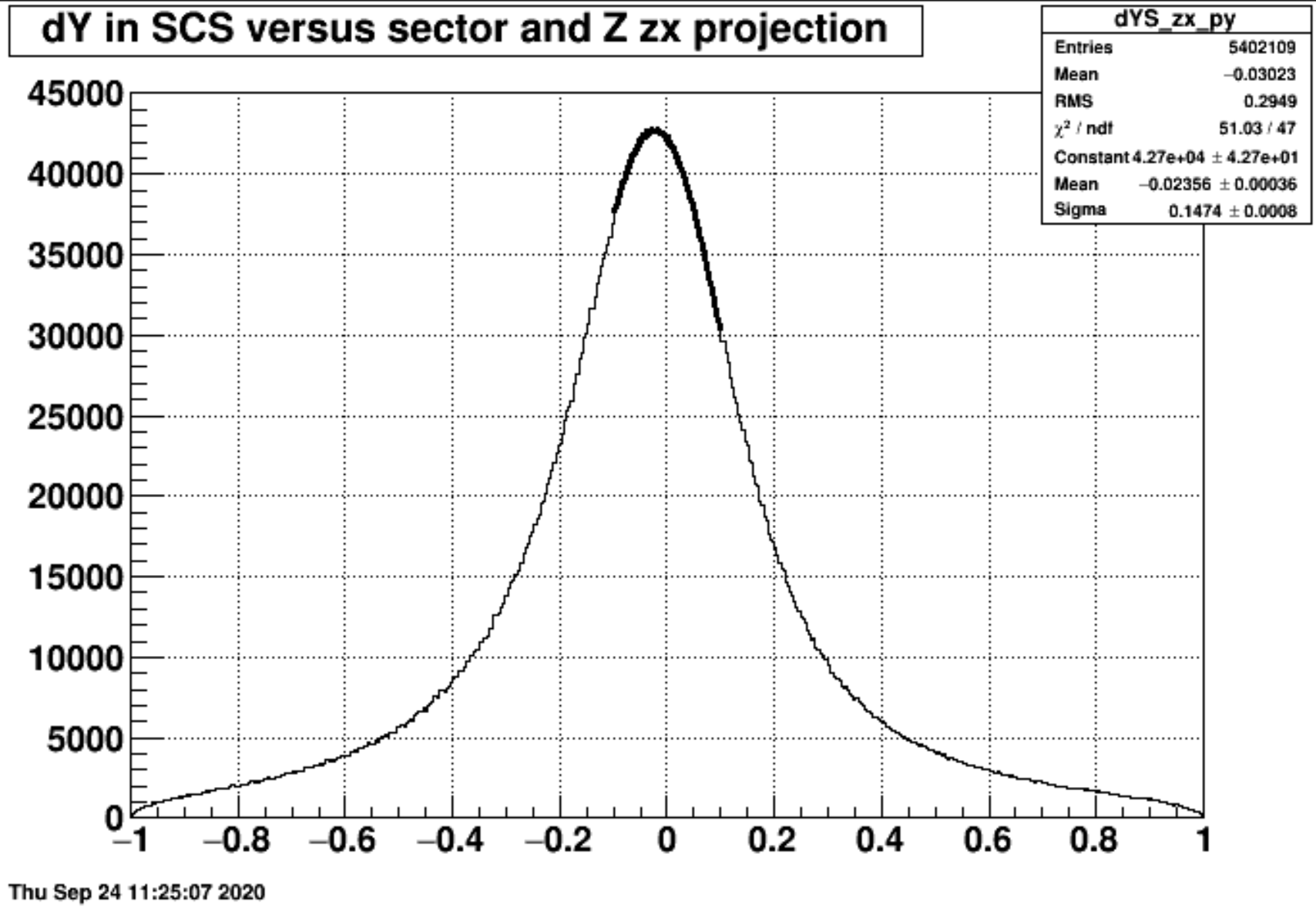

And below plot shows the significance of the proper fit (legend it x axis ranges):
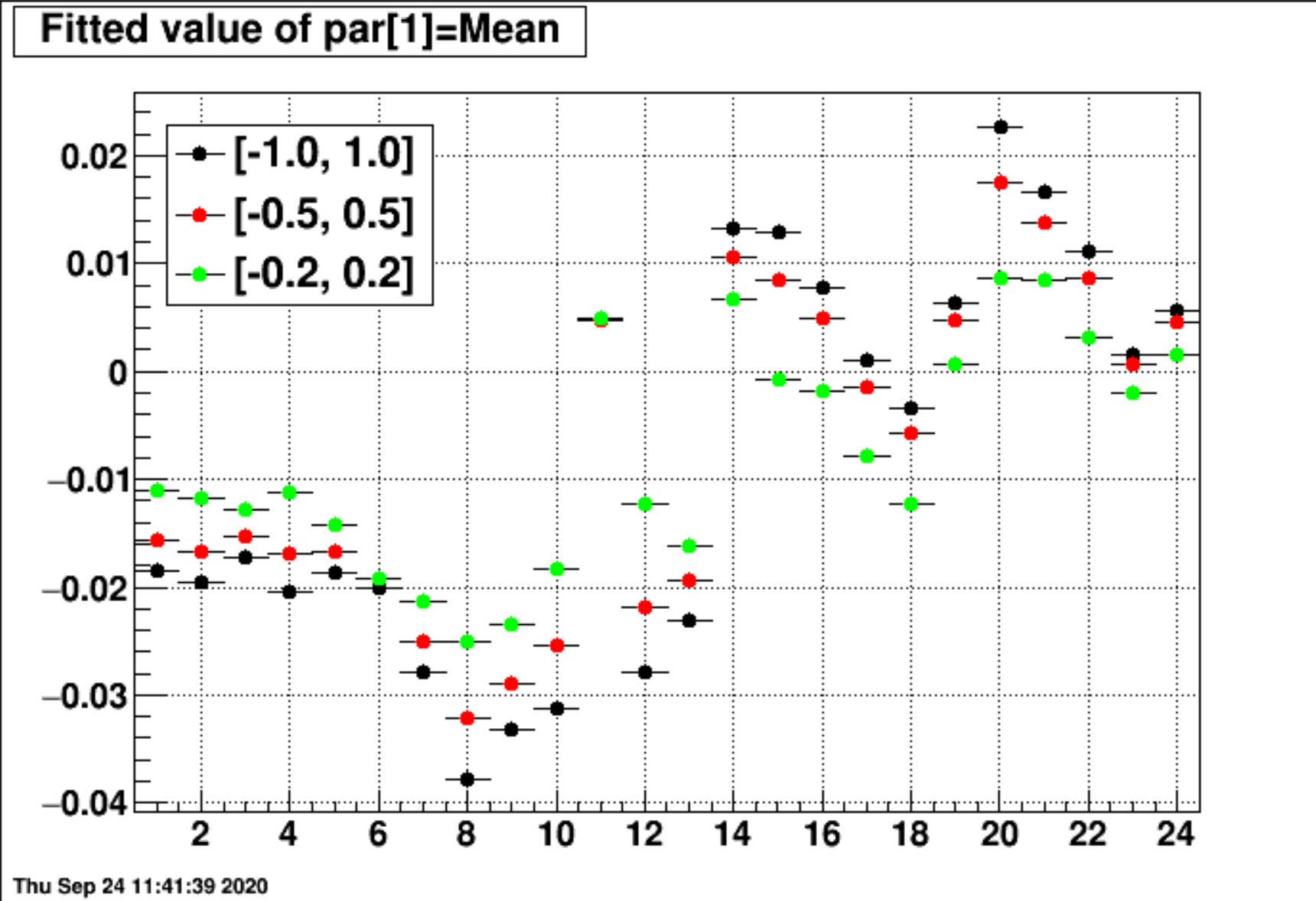
3) But the most significant finding was when we simply decided to revisit the old Run-19 calibration set, because it was seen that EpressProduction of the 19.6 GeV data had significantly smaller splitting (although had some). This study showed that claim was correct we see much less splitting but below plot shows the same result for the misalignment as can be seen in the middle of this blog where I started working on SuperSector alignment - according to current procedure it needs attention - that is the attention that it got which resulted in the mass splitting:

Update: October 16, 2020
It was noticed that the cause of the m2 split comes from the shift in the Z direction. The problem in the vertex DCA that I see in during the alignment is in Y. Y and Z are convoluted through the Lorenz shift (opposite direction in opposite TPC sides because the magnetic fiels in one direction but electric is different).
This observation is based on the fact that simply taking outer TPC hits only with Run-18 alignment shows no problem in m2 split, but new alignment after entire procedure as was done does before shows the problem.
So I decided to start from the Run-18 SuperSector position and only change the Y direction as needed and observe what happens to the Z direction.
It should also be pointed out that simple gaussian fir to the distribution in X, Y and Z directions to extract the alignment parameters do not really work (see below).
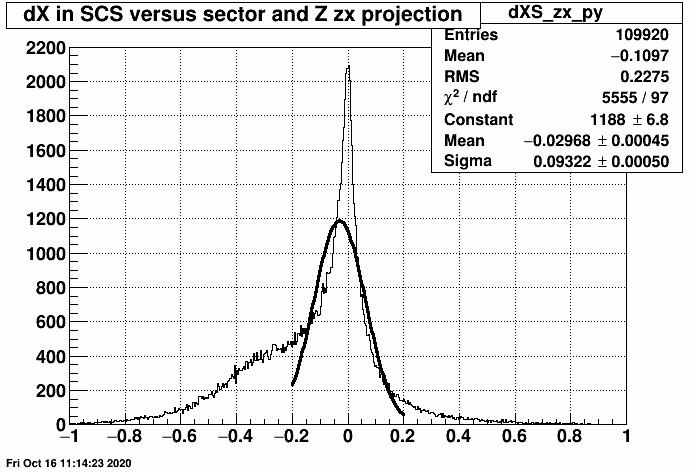

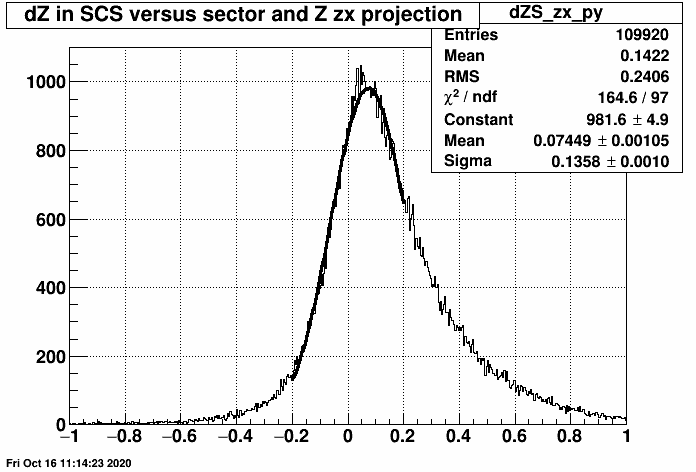
In the above plots the Y direction is already centered (it is final pass) so the distribution looks much more gaussian compared to what it is when there is offset. So I carefully chose the fit range at every step and only moved the supersectors in the Y direction. Plots below showed what happened to the X and Z parameters while adjusting the Y.
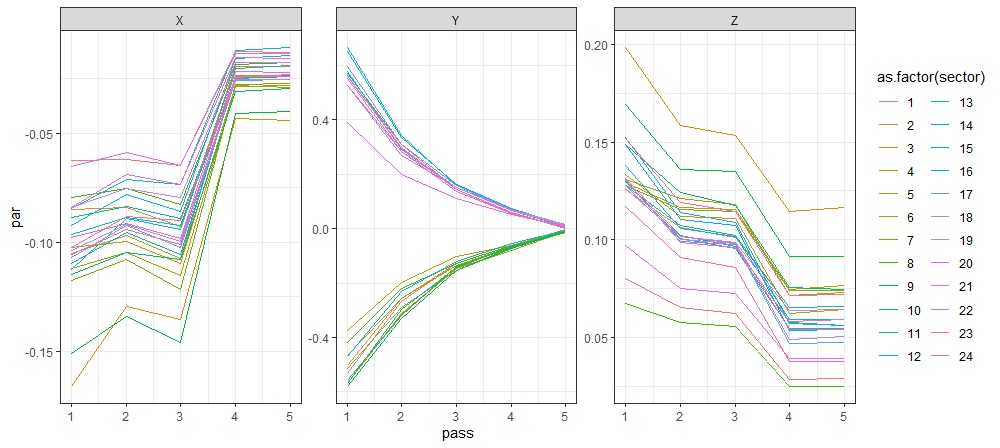
Update: October 21, 2020
I continued in this direction, but the strange thing is the procedure is stuck. If I move Z it moves Y if I move Y back it moves Z. If I move both the results for the DCA does not change.
I think we are onto something here but I am not sure how to explain this.
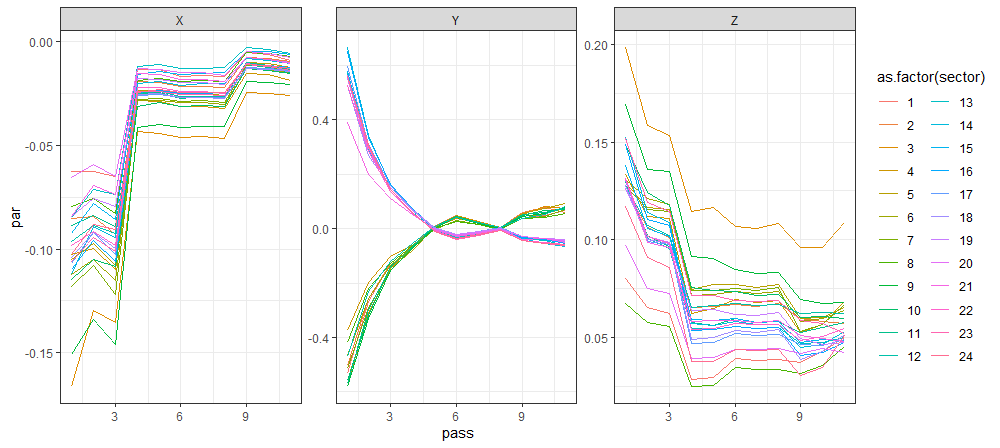
Update: December 02, 2020
Yuri noticed that if one looks at the alignment parameters for the 14.5 GeV run the Y position is split in an opposite direction.
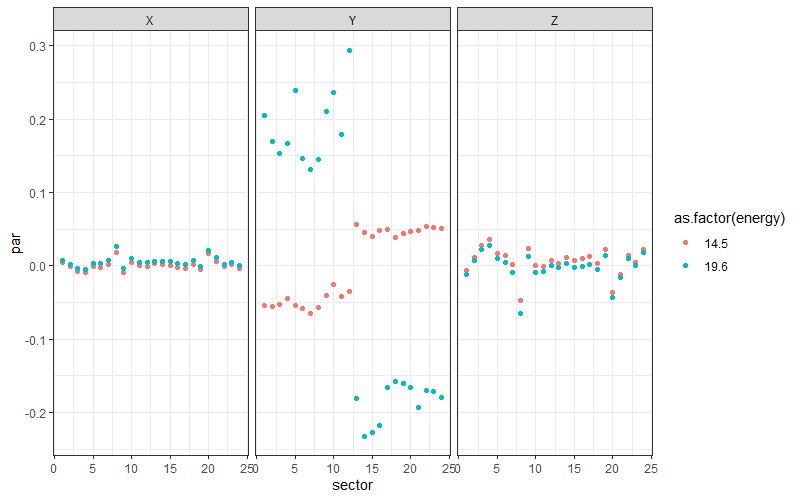
In my studies with dynamical distortions (zero offset for zero lumi) I see different behaviour:
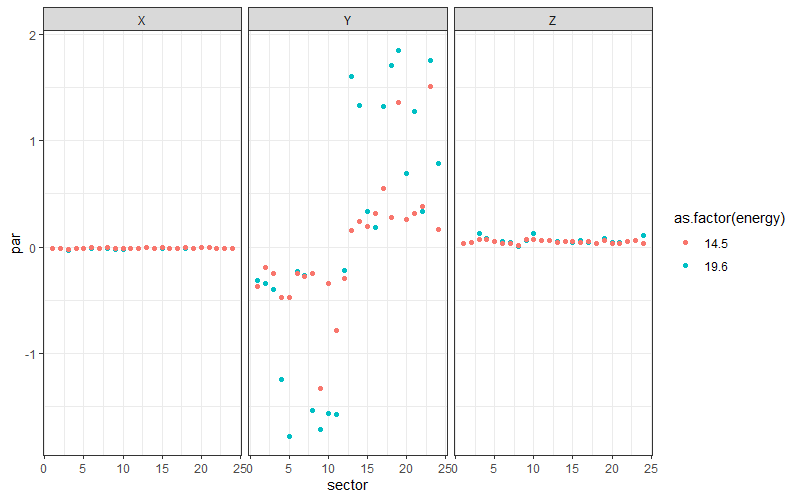
Todo:
- cross-check this with SC[dynamic] parametrization (2 scenarios: 1) adjusted for latest alignment; 2) zero offset for zero lumi.)
- check prompt hit timing for two energies;
UPDATE 2021, March 22
After very long discussions with the TPC Calibration Review Committee it was decided to revert the alignment/t0 parametrization back to what it was before everything that is written in this blog [until this update] and the blog about residuals and the blog about FXT. It was also decided to understand the timing of the detector, but not much has changed there if I am not missing some important aspect. And it was decided to check what will happen with all those tell-tale signs of the problem (e.g. residuals)... Well here is the result.
Bellow are the parameters comparison:
- For the tpcSectorT0 [which come from the prompt hits you can see a lot about them in this blog]; One can see that the difference between what I used and what is not reverted to is within the fluctuation [see t0 stuff above], so this cannot account for the residuals seen in data and split in Z seen in cosmics;

- For the InnerSectorPosition
One can see that Z parameter of the inner sector is even lower a little bit than it was before cosmics showed the need for it's shift;

- For the outerSectorPosition
Same here, the new/reverted parameters are back to what they were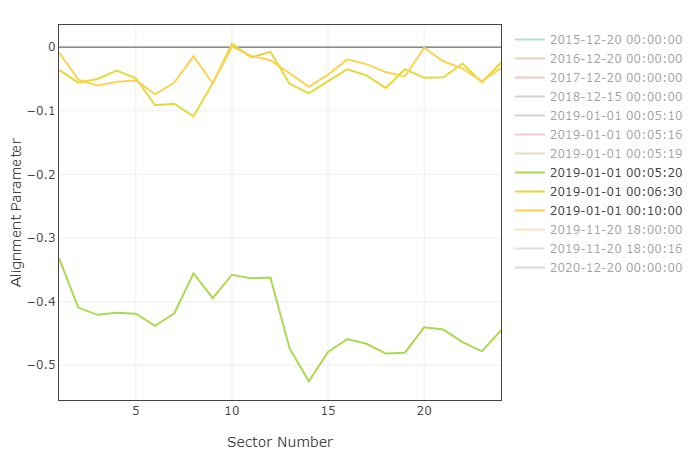
based on the above I do not know why would we expect the residuals to change from what was shown before. Nevertheless here they are:
In case one is wondering if there is any effect from the Space Charge, below is the same plot for the residual but with the Space Charge and Grid Leak turned off:
UPDATE 2021, March 25
The check in previous update proved to be crucial, because Yuri and I got into discussion of the differences between inner and outer sectors that still might be out there that have not been considered and this led to a check of the tpcEffectiveGeomB table that had a pre-iTPC entry for the run-19. That gave us the 4 mm difference between inner and outer sectors that we were after. Here is the confirmation of that table entry being a culprit from the cosmics-19:
Here is confirmation of the fact that all necessary tables are in the database (DEV uses those) from the residuals:
- iraklic's blog
- Login or register to post comments
